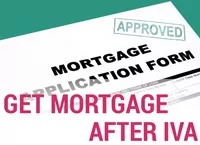The number of people officially insolvent, having carried out an IVA, Bankruptcy or DRO in the first quarter of 2013 was just over 25,000. This is the lowest number in any single quarter since 2008. The figures have fallen each consecutive quarter for the past year.
The main driver for the falling figures seems to be significant reductions in the number of people declaring themselves Bankrupt. These numbers fell 27% in Q1 2013 compared to the same quarter in 2012. The number of people undertaking a Debt Relief Order (DRO) or “light bankruptcy” also fell for the first time since this solution was introduced in 2009.
Interestingly however the number of people starting an IVA fell only slightly year on year and in fact increased compared to Q4 2012. We consider why this might be.
Why are the Bankruptcy numbers falling?
I have long argued that the falling number of people going Bankrupt has been masked by the take up of the Debt Relief Order (DRO) solution.
Introduced into the law in 2009, the DRO is really a type of bankruptcy but designed for people with smaller debts, no assets and low incomes. There was an argument I believed to suggest that those who have done DROs would have otherwise gone bankrupt and so these numbers should be read together.
However even adding the Bankruptcy and DRO numbers together, the overall number of people going through these solutions in quarter one 2013 has fallen by 18% compared to Q1 2012. This is a significant fall.
One of the main reasons for this I believe is that significantly more people who would otherwise have declared themselves bankrupt are now carrying out alternative debt solutions such as IVAs because of the upfront cost of Bankruptcy. Starting an IVA on the other hand can be done for nothing.
Why are the number of IVAs rising?
Compared to Q1 in 2012 the number of people starting an IVA in Q1 2013 fell modestly by 4.9%. However compared Q4 2012 the numbers actually bucked the trend with a slight rise.
Why is this in the face of an overwhelming reduction of the number of bankruptcies? I believe the reason is that over the past 18 months, the acceptable criteria for stating this type of solution have relaxed considerably.
Where 18 months to 2 years ago you would have needed to have debts of at least £15,000 and be able to pay at least £200 a month it is now acceptable to apply with debts of £10,000-£12,000 and disposable income of just £100 or in some cases less.
This means that people who previously would have not qualified and would have been forced to choose a different solution are now starting IVAs. Doing this is free and therefore a far more appealing prospect for those who are struggling financially. You pay nothing up front to start an IVA and pay only what you can afford to your creditors on a monthly basis.
Are falling Bankruptcies and rising numbers of IVAs a problem?
More IVAs and less bankruptcies is certainly not a problem for creditors. If someone with debts decides to go bankrupt, creditors will often end up with nothing. In an IVA they will hope to get a reasonable return. However is it good news for the people in debt themselves?
The answer to this is yes only if an IVA is truly the best solution to solve the individual’s debt problem rather than the cheapest solution to start. Someone paying £100 a month into this type of plan will ultimately repay £6000 or more to their creditors. If they really struggle to manage such payments, surely a one off payment of £700 to go bankrupt and then perhaps paying nothing more towards their debt makes far more financial sense.
In theory this is clearly a strong agreement. However the reality of the situation is that those with only £100 a month available would have to save for 7 months to declare themselves bankrupt. This is a long time to try and deal with often hostile creditors who are demanding money.
A far easier (if not always the best) solution is to start an IVA paying £100 a month for 5 years but gaining immediate legal protection from creditor collection actions.

